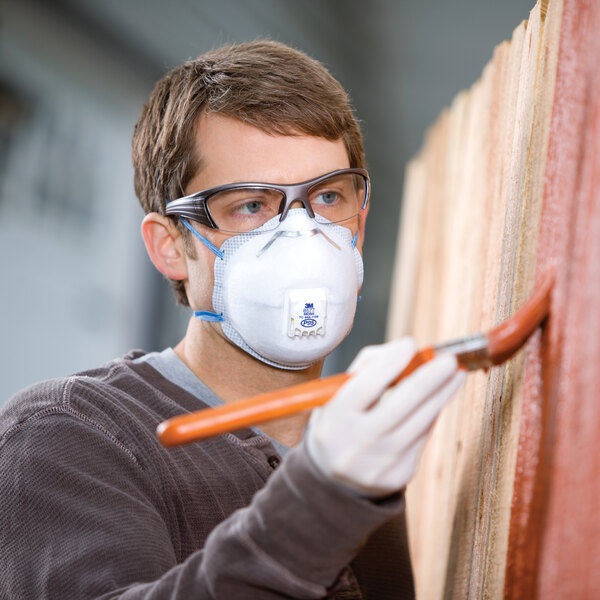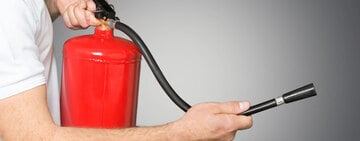NIOSH is a safety acronym that stands for the National Institute for Occupational Safety and Health. This federal agency is responsible for conducting research and making recommendations to prevent work-related injuries and illnesses. When it comes to respirators and filters, NIOSH plays a critical role in ensuring that these products meet certain standards and provide adequate protection to the wearer.
One of the key reasons to look for NIOSH-rated respirators is to ensure that you are using a device that can effectively filter out harmful airborne particles. NIOSH tests respirators and filters to determine their filtration efficiency against particles of different sizes, including those that may be present in hazardous work environments. The NIOSH rating on a respirator indicates the percentage of particles it can filter out, with higher ratings indicating greater filtration efficiency.
You've probably heard of the N95 mask before, but what does it actually mean? We'll explain what the letters and numbers in NIOSH ratings mean below.
N-Series Respirators
The N-series indicates the respirator or filter is "not resistant" to oil. These respirators are primarily used to protect against non-oil-based particles. They are commonly used in industries such as construction, agriculture, and healthcare, where workers may be exposed to these types of contaminants.
- N95 - The N95 rating is the most common and widely recognized rating. It means that the respirator is capable of filtering out at least 95% of airborne particles, including dust, smoke, and other solid and liquid particles. N95 respirators are suitable for a wide range of applications, including construction, woodworking, and healthcare.
- N99 - The N99 rating indicates that the respirator can filter out 99% of airborne particles. This higher level of filtration makes N99 respirators more effective in environments where there is a higher concentration of hazardous particles, such as industrial settings or areas with heavy pollution.
- N100 - The N100 rating offers the highest level of protection among the NIOSH ratings. Respirators with this rating can filter out 99.97% of airborne particles, including both solid and liquid particles. N100 respirators are typically used in highly hazardous environments, such as asbestos removal or chemical handling.
R-Series Respirators
The R in R-series NIOSH respirators stands for "resistant to oil." This designation indicates that the respirator can protect the wearer from particles that may contain oil-based aerosols, but there are two things to keep in mind. R-series masks and filters only protect against oil-based particles for one 8-hour shift, and they are not as foolproof as a P-series respirator.
- R95 - The R95 respirator is the lowest level of protection in the R-series category. It provides a minimum filtration efficiency of 95% against both oil-based and non-oil-based particulates. The R95 respirator is a cost-effective option for environments with moderate levels of oil-based particles.
- R99 - This respirator offers a higher level of filtration, with a minimum efficiency of 99% against oil-based and non-oil-based particulates. The R99 respirator is ideal for environments where there are higher concentrations of oil-based particles present.
- R100 - The R100 respirator provides the highest level of filtration in the R-series category. It offers a minimum efficiency of 99.97% against oil-based and non-oil-based particulates. The R100 respirator is recommended for environments with extremely high concentrations of oil-based particles or when there is a need for maximum filtration efficiency.
P-Series Respirators
P-series respirators offer stronger protection from oil-based particles like lubricants and solvents. These "oil-proof" respirators can be worn for a longer period than the R-series, but always make sure to follow the manufacturer's recommendations.
- P95 - The P-95 respirator is designed to filter out at least 95% of airborne particles, including oil-based particles. It is the most common type of P-series respirator and is widely used in industries such as construction, manufacturing, and agriculture.
- P95 - The P-99 respirator is similar to the P-95 respirator but offers higher filtration efficiency. It is designed to filter out at least 99% of airborne particles, including oil-based particles. The P-99 respirator provides enhanced protection against hazardous particles and is commonly used in industries where a higher level of filtration is required, such as pharmaceutical manufacturing or chemical processing.
- P95 - The P-100 respirator is the highest level of filtration among P-series respirators. It is designed to filter out at least 99.97% of airborne particles, including oil-based particles. The P-100 respirator offers the highest level of protection and is suitable for environments with high levels of hazardous particles, such as asbestos removal or healthcare settings where infectious airborne particles may be present.
For more guidance on particulate respirators and their ratings, visit the NIOSH website.
Back to Top










